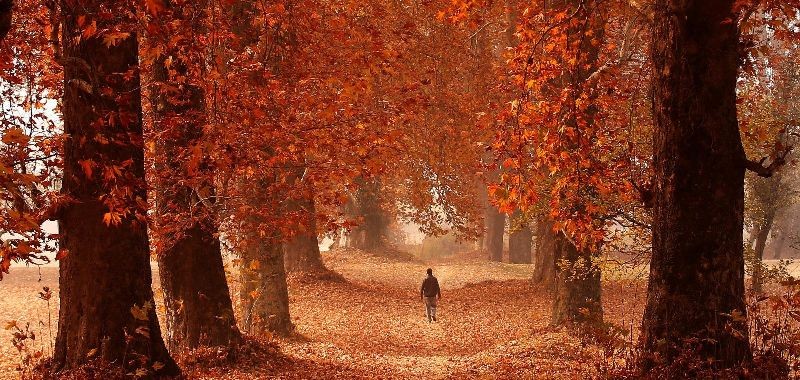Reuters File Photo

Srinagar, September 15 (IANS): The chirp of the Cicada bug, the grain laden golden yellow rice fields, the dance of the rainbow trout in the crystal-clear waters of the Lidder and the Sindh mountain streams, the nip in the morning and evening air -- all these are standout signals that Kashmir's season of plenty, the autumn is here.
Look at the countryside, farmers are busy harvesting the Paddy crop. Luckily for them, the migrant labourers, those had left the Valley with the outbreak of the pandemic, have returned, though in small numbers yet, to work in the Paddy fields and help the locals harvest the grain.
Autumn is undoubtedly the season of plenty in Kashmir. Fruit laden apple trees of myriad varieties, grapes and vegetables flooding the local markets give Kashmiris the choice to choose.
Since centuries, Kashmiris have been drying vegetables like tomatoes, brinjal, pumpkins and even apple scaling to be used during the harsh winter months.
The practice owes itself to the landlocked nature of the Valley that remained disconnected from the outside World for days without end in the past. Although vegetables grown outside the Valley are available round the year now, yet the tradition of storing dried vegetables and even dried fish are part of Kashmir's tradition and heritage.
To keep body and soul together during the harsh winter months, Kashmiris wear a warm tweet over-garment called the 'Pheran' under which they hold an earthen fire-pot woven with willow wicker called the 'Kangri'.
Special cuisine is part of the winter menu to give extra calories needed when the outside temperature drops to minus 7 degrees Celsius during the night and the day temperatures also hover around zero during the 40-day long bitter winter period called the 'Chillai Kalan'.
'Harisa' is one such special mutton dishes the locals eat to get enough calories needed to fight the outside cold. Special 'Harisa' shops come up through Srinagar city and all other towns of the Valley during the winter months where people go to relish this choice winter dish.
The taste of the Harisa is described in the local folklore. It is said that an Afghan governor, who came to Kashmir, was carried away so much by the taste of this special preparation that he did not know where to stop, he over-ate himself to death!
As autumn progresses towards winter, its march is reflected in the changing colours of the Chinar leaves, from green through crimson to yellow.
It is this riot of the changing colours that was described by Urdu Philosopher poet Iqbal when he said, "Jis Khaak Ke Zameer Main Ho Aatish-e-Chinar/Mumkin Nahin Ke Sard Ho Wo Khaak-e-Arjimand (The dust that carries in its conscience the fires of the Chinar/It is not possible for that celestial dust to cool down).






